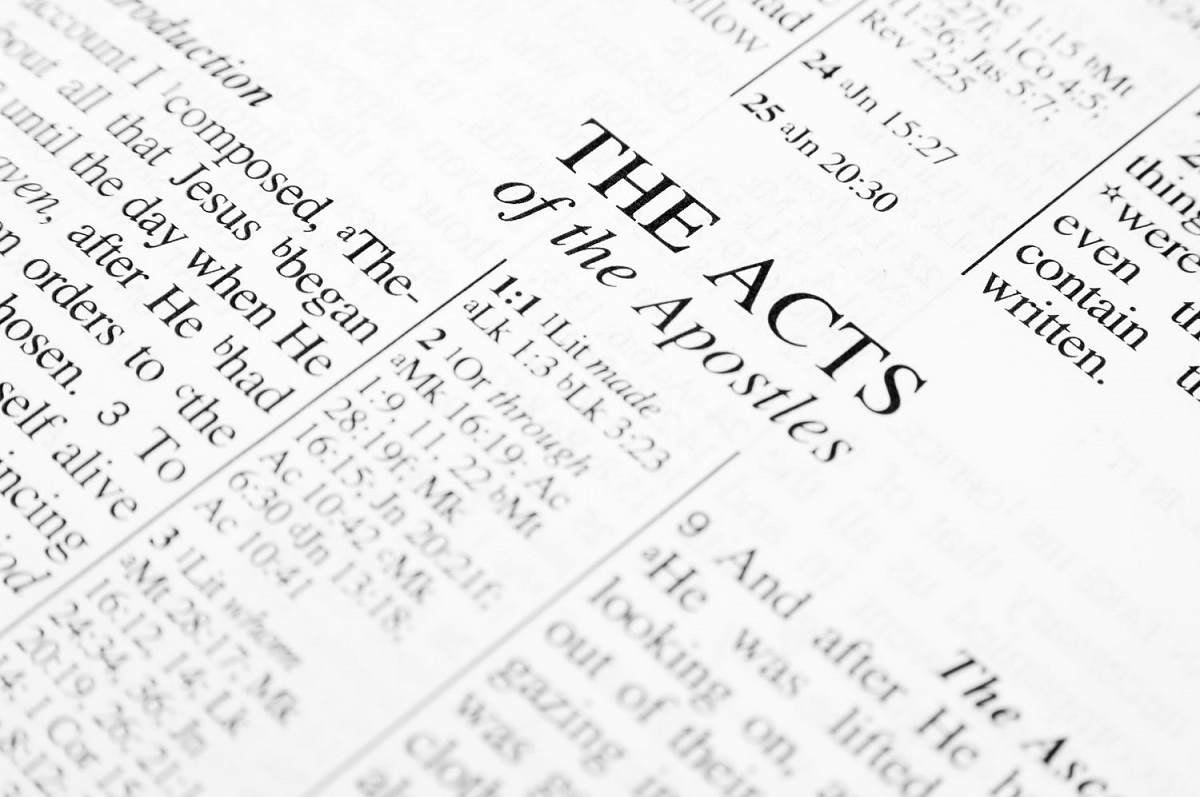The Book of Acts, often called the Acts of the Apostles, is one of the most dynamic and foundational books in the New Testament that bridges the story of Jesus’ earthly ministry (the Gospels) and the Epistles. Written by Luke, the same author of the Gospel of Luke, Acts of the Apostles details the birth, mission, and expansion of the Christian Church, emphasizing the role of the Holy Spirit in empowering believers for mission. This narrative not only details the transition from a small Jewish sect in Jerusalem to a global movement reaching Gentiles but also highlights themes of community, persecution, unity, and evangelism. For anyone studying early Christianity, church history, or missionary work, understanding the Book of Acts provides essential insights into how the message of Jesus Christ spread across the Roman Empire.
Introduction to the Book of Acts
The Book of Acts is the fifth book of the New Testament and follows the four Gospels. It serves as a historical record of how the apostles, empowered by the Holy Spirit, carried out the mission of Jesus Christ after His ascension.
Luke, a physician and companion of the Apostle Paul, wrote Acts around AD 62–70. He addressed it to Theophilus (Acts 1:1), the same person mentioned in the Gospel of Luke, showing that both books form a two-part series.
Understanding the Book of Matthew: Jesus Christ the Messiah
The primary aim of Acts is clear: to demonstrate how the message of the risen Christ spread from Jerusalem to Judea, Samaria, and ultimately to the ends of the earth (Acts 1:8).
Authorship and Historical Context of the Book of Acts
The Book of Acts is traditionally attributed to Luke, a physician and companion of the Apostle Paul, mentioned in New Testament letters such as Colossians 4:14, 2 Timothy 4:11, and Philemon 24. Luke is described as a Gentile convert, possibly from Antioch, with a sophisticated Greek writing style that suggests an educated, urban background. Early church fathers like Irenaeus supported this attribution, viewing Acts as the second volume of Luke-Acts, a unified work addressing Theophilus, likely a high-ranking Roman or patron. However, modern scholars debate this, noting discrepancies between Acts and Paul’s letters, such as differing accounts of Paul’s conversion or his interactions with Jerusalem leaders. Some argue the author may have been an anonymous second-generation Christian using traditions from Paul’s circle, though consensus holds that Luke and Acts share the same author.
Dating Acts is also contentious. The earliest proposed date is around 62 AD, aligning with Paul’s Roman imprisonment, but most scholars place it between 80-90 AD, post-dating the Temple’s destruction in 70 AD and reflecting Mark’s influence. A minority suggest 110-120 AD, citing possible familiarity with Josephus or Paul’s epistles. Written likely in Rome or Ephesus for a mixed Jewish-Gentile audience, Acts addresses tensions between Jewish Christians and emerging Gentile believers, doctrinal disputes, and Roman persecution. In a historical context of Roman imperial rule, Jewish-Roman conflicts, and early church divisions, Acts portrays Christianity as a legitimate continuation of Judaism, entitled to Roman legal protections, while subtly challenging imperial authority by proclaiming Jesus as “Lord of all.”
Understanding the Book of Mark: Jesus Christ the Servant
Structure of the Book of Acts
Spanning 28 chapters, the Book of Acts is structured around the geographical expansion of the Gospel, following Jesus’ commission in Acts 1:8: “You will be my witnesses in Jerusalem, and in all Judea and Samaria, and to the ends of the earth.” This outline divides the book into three main sections:
- Jerusalem Focus (Chapters 1-7): Begins with Jesus’ ascension, the selection of Matthias to replace Judas, and Pentecost, where the Holy Spirit empowers the apostles. It details the early church’s growth among Jews, communal life, miracles, and initial persecutions, culminating in Stephen’s martyrdom.
- Expansion to Judea and Samaria (Chapters 8-12): Covers the scattering due to persecution, Philip’s evangelism in Samaria, Saul’s (Paul’s) conversion, and Peter’s ministry to Gentiles like Cornelius. This section highlights the church’s multiethnic beginnings, including the Antioch community.
- Mission to the Ends of the Earth (Chapters 13-28): Focuses on Paul’s missionary journeys from Antioch, the Jerusalem Council resolving Gentile inclusion, and Paul’s trials leading to Rome. The book ends abruptly with Paul preaching under house arrest, symbolizing the Gospel’s unstoppable spread.
Portrayal of the Church in the Book of Acts
Acts vividly portrays the early church as a Spirit-empowered community, transforming from a small group of disciples into a vibrant, inclusive body of believers. The church is depicted as the “new temple,” where God’s presence dwells among people rather than in a building, fulfilling Old Testament prophecies like those in Ezekiel and Joel. Key characteristics include:
- Communal Life and Unity: In Jerusalem, believers share possessions, break bread, and pray together (Acts 2:42-47; 4:32-35), modeling equality across social classes, genders, and ethnicities.
- Leadership and Structure: Apostles like Peter and James lead, with deacons appointed for practical needs (Acts 6). The Jerusalem Council (Acts 15) demonstrates decision-making through consensus and Spirit guidance.
- Persecution and Resilience: Facing opposition from Jewish leaders and Romans, the church grows amid trials, viewing suffering as part of God’s plan (Acts 5:41; 8:1-4).
- Inclusivity: Acts shows the church evolving from Jewish-centric to multiethnic, with Gentiles welcomed without full adherence to Jewish law, fostering unity in diversity.
Understanding the Book of Luke: Jesus Christ the Savior
The Holy Spirit is the church’s driving force, enabling miracles, bold preaching, and growth, portraying it as a living organism rather than an institution.
Major Themes in the Book of Acts
1. The Power of the Holy Spirit: The Holy Spirit is central to Acts. At Pentecost (Acts 2), the Spirit descends, empowering believers to boldly proclaim Christ. Throughout the book, the Spirit guides, empowers, and directs the Church’s mission.
2. The Birth of the Church: Acts describes the formation of the early Christian community, characterized by:
- Fellowship and unity (Acts 2:42–47).
- Sharing resources and caring for the needy (Acts 4:32–37).
- Leadership through apostles and elders.
3. The Mission to All Nations: From the conversion of Cornelius (Acts 10) to Paul’s missionary journeys, Acts highlights the universal scope of the Gospel. The message is not only for Jews but also for Gentiles.
4. Boldness in Witness: Despite persecution, the apostles proclaim Christ with courage. Acts shows that opposition cannot stop the spread of the Gospel.
5. God’s Sovereignty: Acts reveals that God directs history, using even persecution and suffering to advance His mission.
Understanding the Book of John: Jesus Christ the Son of God
The Mission in the Book of Acts
Mission is central to Acts, illustrating the Great Commission (Matthew 28:19-20) in action through the apostles’ evangelism. Jesus’ command in Acts 1:8 frames the book’s missionary thrust, with the Spirit empowering witnesses to proclaim repentance, forgiveness, and Jesus’ kingship.
- To the Jew First: Paul preaches in synagogues before Gentiles, reflecting the Gospel’s Jewish roots (Acts 13:46).
- Gentile Inclusion: Key moments like Cornelius’ conversion (Acts 10) and the Jerusalem Council affirm missions to non-Jews without circumcision, resolving theological tensions.
- Paul’s Journeys: Three missionary trips (Acts 13-14, 15-18, 18-21) establish churches in Asia Minor, Greece, and beyond, facing cultural clashes but advancing the Gospel.
- Subversive Yet Peaceful: Missions challenge Roman idolatry and social norms, leading to arrests, but emphasize non-violence and loyalty to Jesus as ultimate King.
Acts portrays mission as Spirit-led, overcoming barriers to invite all nations under Jesus’ reign.
Key Events and Narratives in the Book of Acts
Acts is rich with dramatic events that illustrate church formation and mission expansion:
- Ascension and Pentecost (Acts 1-2): Jesus ascends, promising the Spirit; at Pentecost, tongues of fire enable multilingual preaching, leading to 3,000 conversions.
- Early Miracles and Persecutions (Acts 3-7): Peter heals a lame man, preaches, and faces arrests; Stephen’s defense and stoning spark widespread scattering.
- Paul’s Conversion (Acts 9): Saul, persecutor of Christians, encounters Jesus on the Damascus road, becoming Paul, the missionary to Gentiles.
- Cornelius and Antioch (Acts 10-12): Peter’s vision leads to baptizing Gentiles; Antioch becomes a mission hub, sending Paul and Barnabas.
- Paul’s Missionary Journeys (Acts 13–21): Paul embarks on three missionary journeys, spreading the Gospel across Asia Minor, Greece, and eventually to Rome. He plants churches, mentors leaders, and faces opposition.
- Jerusalem Council (Acts 15): Debates Gentile requirements, deciding faith alone suffices, promoting unity.
- Paul’s Trials and Voyage (Acts 22-28): Arrested in Jerusalem, Paul appeals to Caesar, surviving shipwreck en route to Rome, where he preaches freely.
Theological Ties and Fulfillment in Acts
Acts ties to Old Testament prophecies, portraying the church as fulfilling God’s promises to Israel and extending them globally. Pentecost fulfills Joel 2:28-32; Gentile inclusion echoes Isaiah 49:6. Jesus is the exalted Messiah, with the church as his witnesses.
See Also: Understanding The New Testament: Matthew To Revelation
The Church in Acts: A Model for Today
1. A Spirit-Filled Community: The early Church was marked by prayer, worship, and reliance on the Holy Spirit. Today’s Church must also depend on the Spirit’s guidance and power.
2. A Caring and Sharing Community: Believers shared their possessions and supported one another (Acts 2:44–45). Modern churches are called to embody generosity and love in action.
3. A Missional Community: The Church in Acts existed for mission—sending out believers to proclaim Christ everywhere. Churches today must see themselves as missionary communities, not just worship centers.
4. A Persevering Community: Despite persecution, the Church grew. Modern Christians can learn resilience from the early believers, trusting God’s sovereignty even in trials.
The Mission in Acts: Lessons for Today
1. Mission Begins at Home: The apostles first preached in Jerusalem. Today, mission starts where we are—in our families, neighborhoods, and workplaces.
2. Mission Breaks Barriers: Acts shows the Gospel breaking cultural, racial, and geographical barriers. The Church must be inclusive, reaching out across divisions.
3. Mission Requires Boldness: Peter and Paul preached fearlessly. Today’s believers are called to boldly proclaim Christ, even in hostile environments.
4. Mission is Powered by the Spirit: Acts demonstrates that mission is not human effort alone but Spirit-led. Churches must prioritize prayer and dependence on the Spirit in their outreach.
5. Mission is Global: Paul’s journeys remind us that the Gospel is for the nations. Modern mission involves both local evangelism and global outreach.
Relevance of the Book of Acts Today
The Book of Acts remains vital for understanding the Church’s identity and mission today:
- In an age of division, Acts calls the Church to unity.
- In a time of uncertainty, it points to God’s sovereign plan.
- In a world of rapid change, it reminds us that the Gospel is timeless and universal.
- In a culture often hostile to faith, Acts inspires boldness in witness.
Recommended: Understanding The Bible: Genesis to Revelation
Conclusion
The Book of Acts presents a powerful narrative of the Church’s birth and mission. It shows how ordinary believers, empowered by the Holy Spirit, spread the Gospel from Jerusalem to the ends of the earth. Acts teaches us that the Church is not just an institution but a Spirit-filled, missional community called to witness to Christ in every generation.
As modern believers, we are invited to continue the story of Acts in our own time—living as a Church on mission, empowered by the Spirit, and proclaiming Jesus Christ to the nations.
Last modified: September 29, 2025





